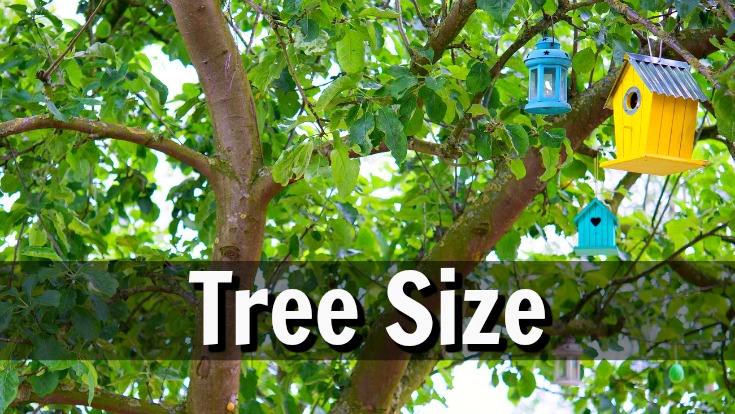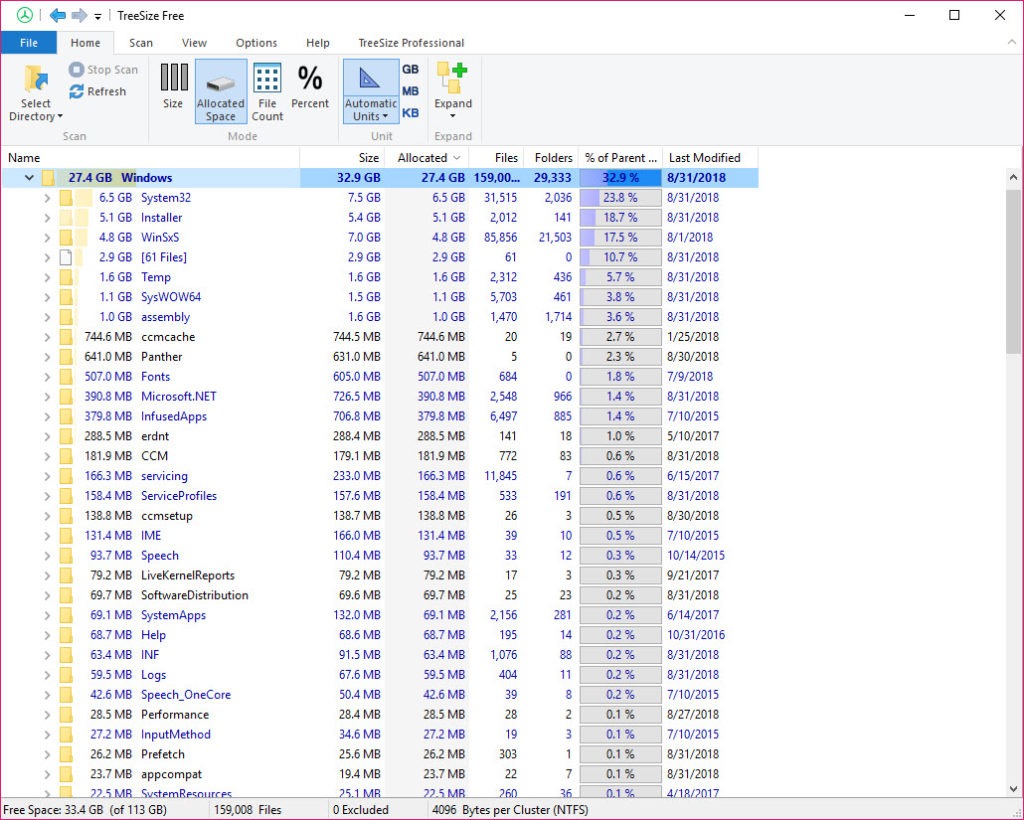
These files can be stored away and reused in a later step for detailed analysis. Scans results can be written into XML files at any given time, which provides a history of your disk usage. These services have now been started implicitly by opening the dialog and if you now execute "Compare with snapshot" again, you should see the correct results. If you see entries there then not all required services have been running. If no snapshots are listed there, the program itself can also not list any entries. You can verify this by doing a right-click on the destination directory, open properties and select the "Previous Versions" tab. Please note: if this list is empty or an error message "No snapshots available for this scan" appears, there are two possible reasons for that: either no snapshots are existing or not all necessary services are running on the destination system. After selecting a Snapshot, click the "Compare" button to start the size comparison process.
Treesize older version free#
It also shows the free space of each Snapshot, making it easy to spot exactly when the disk space on the hard drive where the current scan path resides on has increased or decreased. The following dialog shows a list of the available Snapshots sorted according to their time-stamp. You can also use the Application Menu ("File" > "Compare current scan" > "Compare with snapshot"). Now click the "Compare with snapshot" button on the " Scan" Ribbon tab. To compare a disk space scan with a snapshot, simply select a scan in the Directory Tree.
Treesize older version windows#
Major benefits of this mechanism are, that it can be created within seconds and Windows will automatically delete it if the disk space that it occupies is needed. A snapshot could be described as a "photography" of the disk space status at a certain point in time. The easiest way to do this is the snapshot feature. TreeSize provides several different ways to compare your scans with each other. This can help to identify files and folders that grow in size regularly and could eat up your space quickly if not handled at an early stage. OIf you selected "Compare with snapshot", a dialog will open enabling you to choose a snapshot.ģ.Select if you want to view size changes in the Directory Tree, in Views, or both.īy comparing a scan result with a previous scan, you can easily see which filers and folders were added and removed and analyze the space development in that time period. OIf you selected "Compare with saved scan", you may now choose the XML file of the previously saved scan. To enable the comparison mode, please follow these steps:ġ.Scan the path you want to view the size development for to get current reuslts.Ģ.Go to Scan > Compare with saved scan or Compare with snapshot.


Snapshots of the file system (available only for local NTFS drives).Previously saved TreeSize scans (XML report).There are two different data sources available for the comparison: For that purpose, TreeSize compares data of the current scan with historical data. TreeSize provides a powerful comparison mode enabling you to analyze size development over a period of time. For a detailed analysis of your disk space usage it may be helpful not only to see the current usage, but also its development over time.


 0 kommentar(er)
0 kommentar(er)
